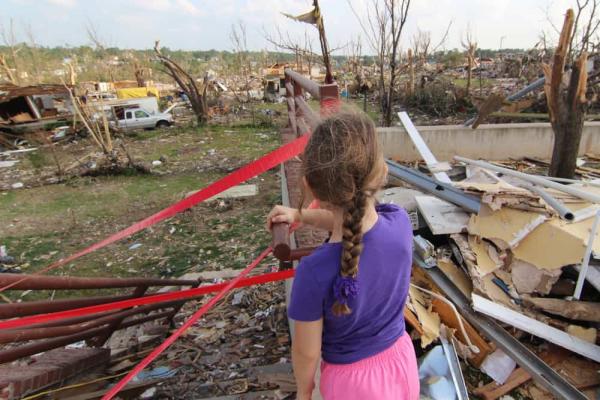
Recent natural disasters and school shootings have touched many of us. Here are 10 tips for talking to your children about tragedy:
Start where they are
What your children understand about what has happened will depend on their proximity to the event, exposure to news media covering the event, and the responses of the adults around them. One mom kept it at her child's level by asking her son directly what he had heard about a school shooting, and talked with him about just these things and answered only his specific questions.
Gauge your own response
Usually, if the parent stays calm then the children will also stay calm. If the parent identifies specific coping skills, the children will use them as well. A father modeled emotional expression for his son by crying after a fire destroyed a nearby home, but also finding ways to volunteer.
Acknowledge fears, but counter them
Children may worry that a shooter will come to their school, too, or jump every time there is lightning because it might mean another tornado. Verbalize those fears, but also counter them with facts. One father pointed out that school shootings are rare, and another father reminded his children that not every thunderstorm brings a tornado.
Process with other adults
Before talking to your children, process your own emotional response with other adults. If you were more directly affected, modeling healthy grieving and mourning together is appropriate and healthy. One group of moms met for breakfast every week after a school shooting, working to keep their emotional needs separate from the emotional needs of their children.
Reassure safety
Talk about safety in a neutral way or even fun way. One grandmother role played with younger children, making safety planning fun and giving them practice without making it frightening. The older children helped brainstorm escape routes, ways to call for help, and safety items needed for a storm.
Follow the child's pace
One mom let her children express themselves as they always have: playing outside, artwork, music, or games. Family dinners foster moments for good communication, and long walks or hikes give time and space for children to bring up issues they want to share. Physical movement and creative expression are excellent ways for children to process trauma, both emotionally and physiologically.
Normalize
Maintaining structure and routine as much as possible will help children feel safe and comfortable. Helping children maintain function will empower them to express their own emotions, process their own responses, and cope with the layers of feelings and thoughts they have as the world around them changes. One couple realized that funerals usually follow the death of a loved one, so took their children with them to a funeral as a normal part of mourning. This helped the children participate in their own grieving process.
Watch for regression, but don't expect it
Children struggling with anxiety or overwhelming emotions often regress in developmental areas. They may begin bedwetting again, or lose their toilet training, or becoming clingy to parents. They may want to sleep with siblings or in the parents' bed or need the nightlight like they did years ago. These are signs the child needs more help and opportunity to express her emotional response, and increased structure and normalized routine may also help. Some changes in eating and sleeping patterns, concentration levels, and topic of conversation is expected and will settle down over time.
Turn off the media
It is one thing to watch the news to know the path of a storm or prepare appropriately for shelter; it's another thing to constantly stare at repeated images of the aftermath. A single mom watched the media carefully so her family could be prepared, but after obtaining the information she needed, turned on a movie and made popcorn. This way her children were well-informed and calmly prepared, rather than in crisis and anxious.
Respond actively
Finding ways to help with cleanup efforts after a natural disaster may help children feel powerful and in control, making a positive contribution to their community. Delivering flowers or stuffed animals to local children affected by a school shooting helps children not involved in the tragedy find a way to respond directly to what they witnessed. Writing a note to a child displaced because of a tragedy is a way to be a friend. Volunteering at a local agency or for a church service project can help people far away from the tragedy still contribute something positive.
Children look to us for safety, comfort, and modeling of healthy emotional expression. Talking with them about tragedies and teaching them how to cope is a vital part of raising them well. Helping each other is a part of mourning together, and we grieve because we loved so much.

